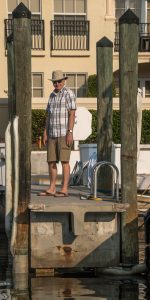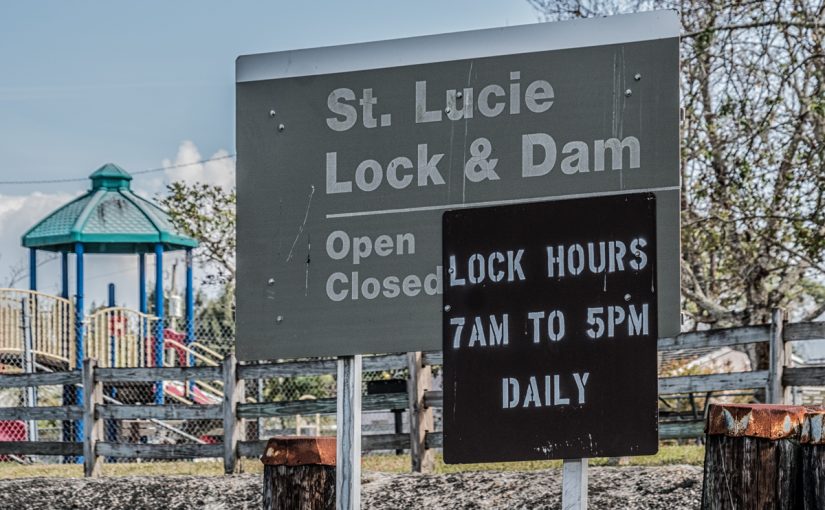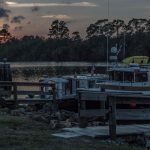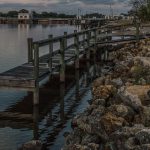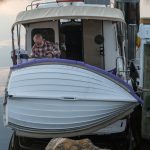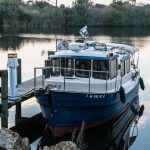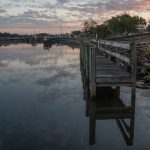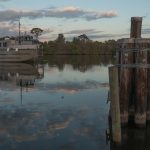Jupiter Lighthouse is our milestone as we travel North. It markes the end of our crowded, bridge-rich travel and the start of a more rural area where the very rich (as opposed to the just rich) have built their homes. We pass by the lighthouse and, at least in my mind, leave the world behind – entering large stretches of water surrounded by nothing but trees.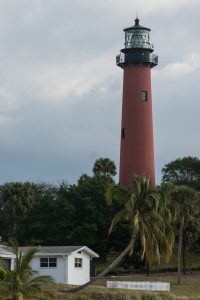
Lake Okeechobee is the largest fresh (actually polluted) lake in Florida. Years of dumping trash and over fertilizing have given the lake a smell that is “unique” to central Florida.The Herbert Hoover Dike is a dike around the waters of Lake Okeechobee. The lake is maintained several feet above sea level for the sugar and other commercial craft that carried valuable cargo before the trains assumed the burden.
A se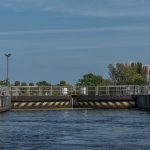 ries of canals, rivers, dams and locks connect Lake Okeechobee with both the Atlantic Ocean at Pt. St. Lucie and the Gulf of Mexico at Ft. Myers. The trip across the center of Florida is limited to boats drawing about 6′ or less and being less than the lowest bridge, about 49′.
ries of canals, rivers, dams and locks connect Lake Okeechobee with both the Atlantic Ocean at Pt. St. Lucie and the Gulf of Mexico at Ft. Myers. The trip across the center of Florida is limited to boats drawing about 6′ or less and being less than the lowest bridge, about 49′.
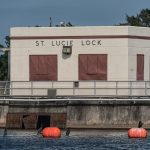 Our Ranger Tug is a perfect vessel for this adventure. It fits easily over the shallow portions of the lake and ducks under most bridges without opening.
Our Ranger Tug is a perfect vessel for this adventure. It fits easily over the shallow portions of the lake and ducks under most bridges without opening.
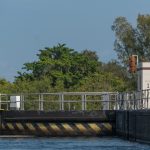 There are several locks and dams used to raise the water level as we travel toward the lake. Another set lowers the level once we pass through the lake and start down the steps toward Ft. Myers.
There are several locks and dams used to raise the water level as we travel toward the lake. Another set lowers the level once we pass through the lake and start down the steps toward Ft. Myers.
As a result of the dams and locks, there is no tide in the lake. The Corps of Engineers does raise and lower the level depending on rainfall and expected conditions, they may discharge a significant quantity of poor quality fresh water into the ocean and gulf. These discharges are accompanied by large fish kills, red tide, and algae blooms. There was only a small discharge in progress during the trip.
Immediately west of the St. Lucie lock is a campground shared by boats and motor homes.
This was the western terminus of the adventure for Jon and Marilyn Ponder and Snug Tug. They are off to see their new Grandchildren.